Scented Geranium Pelargonium 'Golden Clorinda' (U/sc/c)

ABOUT
Pelargonium 'Golden Clorinda', commonly known as "Golden Clorinda Geranium," is a striking cultivar notable for its lush, decorative foliage and showy blossoms. The leaves of this plant are a true visual delight; they have a unique variegated pattern where the central part of the leaf displays a rich, deep green color which transitions to a bright golden-yellow at the edges, creating a vibrant contrast. This variegation provides year-round interest, adding a splash of color to gardens and indoor settings. The flowers of the Golden Clorinda Geranium present a bold aesthetic with their bright, cheerful hues. Typically, the blooms are large, clustered, and emerge in an array of colors that can include shades of pink, red, or purple. Each flower is comprised of rounded petals that are slightly ruffled, giving them a soft yet lively appearance. These blossoms are often visited by pollinators like bees and butterflies, adding to the dynamic scene wherever the plant is grown. Together, the colorful foliage and flowers make the Golden Clorinda Geranium a popular choice for plant enthusiasts looking to enhance the visual appeal of their spaces without referencing the physical size of the plant. Its ornamental characteristics allow it to stand out in container gardens, borders, and as a standalone specimen, where its vibrant presence can be fully appreciated.
About this plant
 Names
NamesSynonyms
Golden Clorinda Geranium, Fancy Leaf Geranium, Variegated Geranium.
Common names
Pelargonium 'Golden Clorinda'
 Toxicity
ToxicityTo humans
The plant known as scented geranium (Pelargonium) generally has low toxicity to humans. If ingested in large quantities, it may cause mild gastrointestinal upset, including vomiting or diarrhea. However, such reactions are relatively uncommon as they are not typically consumed. Always exercise caution and consider consulting with a medical professional if ingestion occurs and adverse symptoms are observed.
To pets
Scented geraniums (Pelargonium) are known to be toxic to pets, particularly dogs and cats. If ingested, they can cause mild to moderate gastrointestinal distress, including vomiting, anorexia, depression, and occasionally diarrhea. In most cases, the symptoms are not life-threatening, but if a pet has consumed a considerable amount of the plant and is showing severe distress, it is essential to seek immediate veterinary care.
 Characteristics
CharacteristicsLife cycle
Perennials
Foliage type
Evergreen
Color of leaves
Variegated
Flower color
Pink
Height
2-3 feet (61-91 cm)
Spread
2-3 feet (61-91 cm)
Plant type
Shrub
Hardiness zones
10
Native area
South Africa
Benefits
 General Benefits
General Benefits- Attractive Foliage: The 'Golden Clorinda' boasts vibrant, golden-edged leaves that add aesthetic appeal to any garden or indoor space.
- Floral Display: It produces colorful flowers that can enhance the visual interest of the area where it's grown.
- Fragrance: This variety of geranium is known for its pleasant scent which can perfume the air around it.
- Drought Tolerance: It has good drought resistance, requiring less frequent watering and making it suitable for xeriscaping.
- Easy Propagation: Geraniums can be easily propagated from cuttings, making it simple to increase your stock or share with friends.
- Limited Pests and Diseases: Generally, it faces fewer problems with pests and diseases compared to many other plants, reducing the need for chemicals.
- Long Blooming Period: The plant enjoys a long flowering season, providing colors for a significant portion of the year.
- Container Gardening: It is well-suited for pots and containers, enabling it to be grown in small spaces or urban environments.
- Low Maintenance: Geranium 'Golden Clorinda' typically requires minimal care, making it ideal for novice gardeners or those with limited time.
- Attracts Pollinators: The flowers can attract bees and butterflies, which are beneficial for pollinating gardens and supporting local ecosystems.
 Medical Properties
Medical PropertiesThis plant is not used for medical purposes.
 Air-purifying Qualities
Air-purifying QualitiesThis plant is not specifically known for air purifying qualities.
 Other Uses
Other Uses- As a natural fabric dye - The leaves and flowers can be used to create a natural dye for fabrics, providing a range of colors from green to brown, depending on the mordant used.
- Insect repellent sachets - Dried leaves of the geranium can be placed in sachets to repel moths and other insects from wardrobes and drawers.
- Culinary decoration - Edible varieties of geranium petals can be crystallized or used fresh as decorative elements on desserts and in salads.
- Aromatherapy - The essential oil of geranium is used in aromatherapy for its fragrance and to promote relaxation.
- Plant symbolism - Geraniums are sometimes given as gifts to convey wishes for good health and happiness, making them suitable for plant-based symbolism in gifts.
- Crafting botanical prints - Leaves can be used to make botanical prints on paper or fabric, creating natural art pieces.
- Geranium water infusion - Leaves can be infused in water to create a mildly scented rinse for linens or a freshening spray for rooms.
- Natural potpourri - Dried geranium leaves and flowers can be used as a component in homemade potpourri mixtures to freshen indoor air.
- Homemade cosmetics - Geranium oil, extracted from the plant, is used in making homemade lotions, balms, and perfumes.
- Garden companion planting - Geraniums can be planted alongside vegetables like tomatoes to help repel pests such as aphids and caterpillars.
Interesting Facts
 Feng Shui
Feng ShuiThe plant Geranium is not used in Feng Shui practice.
 Zodiac Sign Compitability
Zodiac Sign CompitabilityThe plant Geranium is not used in astrology practice.
 Plant Symbolism
Plant Symbolism- Comfort: The Pelargonium 'Golden Clorinda', commonly known as scented geranium, is often associated with comfort due to its pleasant fragrance which can have a soothing effect on the mind and body.
- Healing: Scented geraniums have been used in traditional medicine, which associates these plants with healing properties, both physically and emotionally.
- Friendship: Gifting scented geraniums can represent a symbol of friendship or an expression of kindness, as the plant's scent and beauty are thought to bring joy to the receiver.
- Positivity: With its bright flowers and sweet aroma, the scented geranium is often symbolic of positivity and is believed to repel negative energies and invite in good vibes.
- Harmony: The balancing scent of the scented geranium can promote a sense of harmony and is used in aromatherapy to create a peaceful and balanced atmosphere.
 Water
WaterFor the Scented Geranium (Pelargonium 'Golden Clorinda'), it is important to water thoroughly whenever the top inch of soil feels dry to the touch, which typically amounts to once every 7-10 days, depending on environmental conditions. Use room temperature water and apply it directly to the soil to avoid wetting the foliage, as this can lead to fungal diseases. During each watering, provide enough water so that it runs through the drainage holes—this ensures the roots are sufficiently hydrated. As a general rule, aim to provide approximately one gallon of water per plant for each watering session, adjusting for the size of the plant and the pot.
 Light
LightThe Scented Geranium prefers bright, indirect sunlight to thrive. A spot near an east or west-facing window where the plant can receive soft morning or late afternoon sun is ideal. However, too much direct sun can scorch the leaves, so protect it from the harsh midday sun, particularly in hot summer months. If grown outdoors, dappled shade is preferable.
 Temperature
TemperatureScented Geraniums are comfortable in temperatures ranging from 55°F to 70°F during the day and should not be exposed to temperatures below 50°F to avoid cold damage. They can survive brief periods of colder weather, but prolonged exposure to temperatures below freezing can be fatal. The ideal temperature range for this plant is between 65°F and 70°F.
 Pruning
PruningPruning Scented Geraniums promotes bushier growth and prevents the plant from becoming leggy. It's best to prune in early spring or after flowering to shape the plant and remove any dead or yellowing leaves. Aim to prune about once or twice a year, cutting back up to one-third of the plant to encourage new growth. Additionally, deadheading spent flowers will help encourage continuous blooms.
 Cleaning
CleaningAs needed
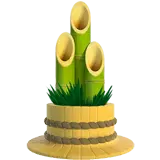 Soil
SoilThe best soil mix for the Scented Geranium is light, porous, and well-draining with equal parts peat, perlite, and potting soil. Maintain soil pH between 6.0 and 7.0 for optimal growth.
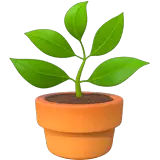 Repotting
RepottingScented Geraniums should be repotted every 1-2 years or when the plant has outgrown its current container, to ensure adequate root space and fresh soil.
 Humidity & Misting
Humidity & MistingScented Geraniums prefer moderate to low humidity levels and thrive in typical household humidity conditions without the need for additional humidity control.
 Suitable locations
Suitable locationsIndoor
Place in bright, indirect light; water when soil is dry.
Outdoor
Grow in sun or partial shade; shelter from harsh weather.
Hardiness zone
10-11 USDA
 Life cycle
Life cyclePelargonium 'Golden Clorinda' (Scented Geranium) starts its life as a seed, which germinates in warm, moist soil conditions, usually in the spring. Upon sprouting, it enters the seedling stage where it develops true leaves and begins photosynthesis. As it matures into the vegetative stage, the plant grows rapidly, produces a strong stem, and develops its characteristic fragrant foliage. During the flowering stage, the Scented Geranium produces clusters of small, attractive blooms that can be of various colors depending on the specific hybrid, attracting pollinators. After pollination, if it occurs, the plant may produce seeds, completing the reproductive phase of its life cycle. Finally, as a perennial, it enters a dormancy period in winter, reducing growth activity, and then it regrows from its base in the next growing season, continuing its life cycle.
 Propogation
PropogationPropogation time
Spring-Early Summer
The Pelargonium 'Golden Clorinda', commonly known as a scented geranium, can be propagated during its growing season, which is generally in the spring and summer months. The most popular method of propagation for this particular variety is through stem cuttings. The process involves selecting a healthy, non-flowering stem that is about 3-4 inches (approximately 7.5–10 cm) long and cutting it just below a leaf node with a clean, sharp pair of scissors or a knife. It is ideal to strip the bottom leaves off, leaving a few at the top. The bare stem is then dipped in rooting hormone powder to encourage root growth and planted in a well-draining potting mix. The cutting should be kept in indirect sunlight and maintained with consistent moisture, but not overly wet, until roots have established, which typically takes a few weeks. Once rooted, the plant can be transferred to a larger pot or to its final growing location.
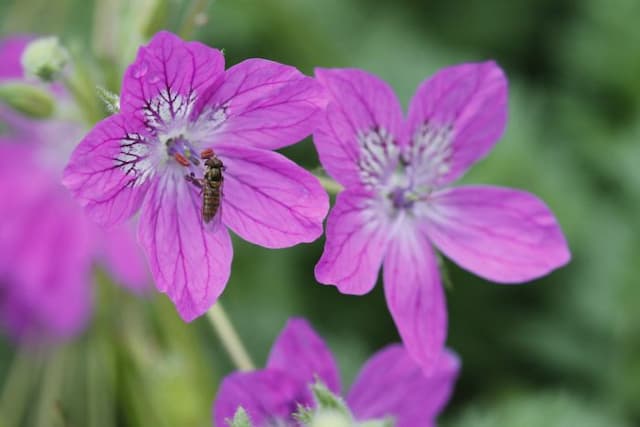
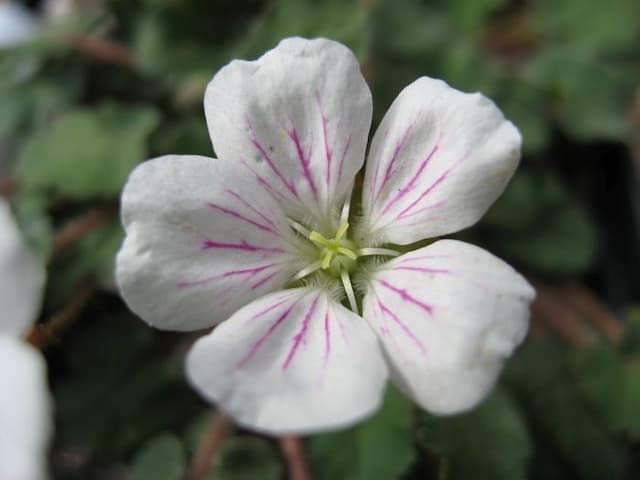
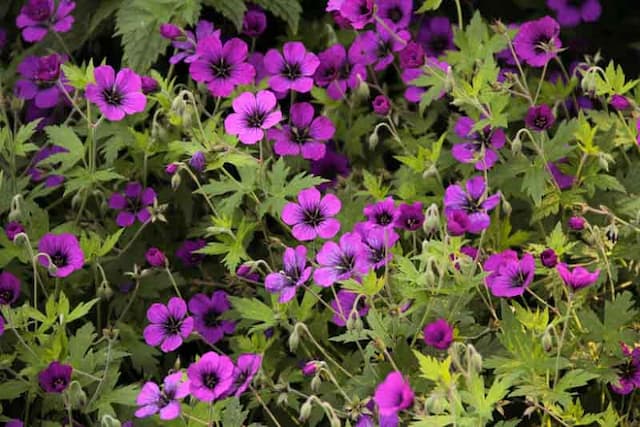

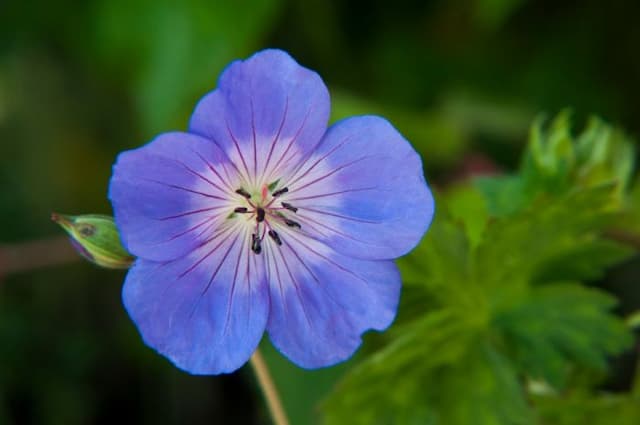



![Cranesbill [Rothbury Gem]](/_next/image?url=https%3A%2F%2Fplants-admin.emdemapps.com%2Fimages%2Fplants%2F%2Fimages%2F604b6243984c2.png&w=640&q=75)
